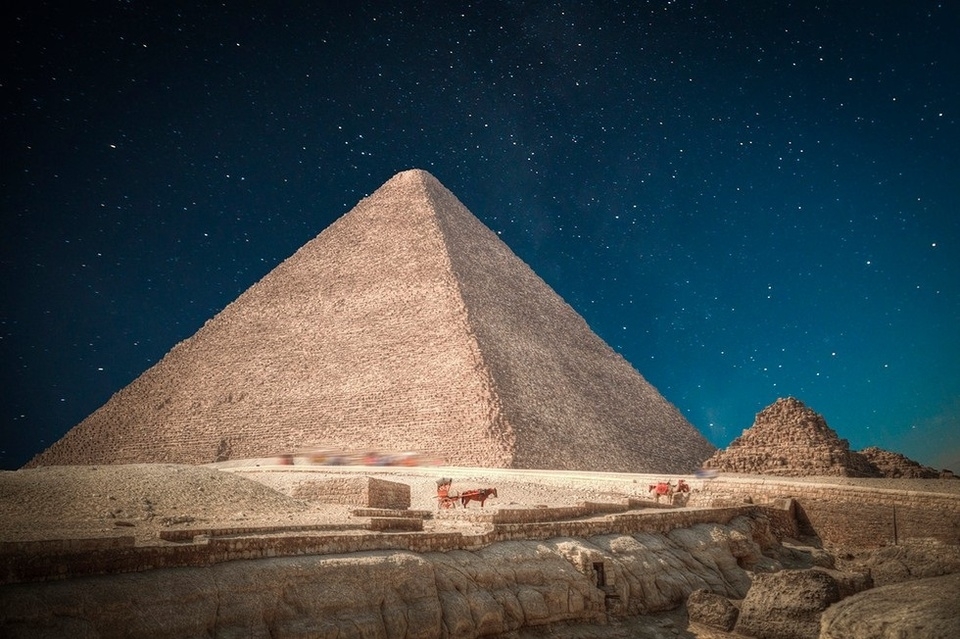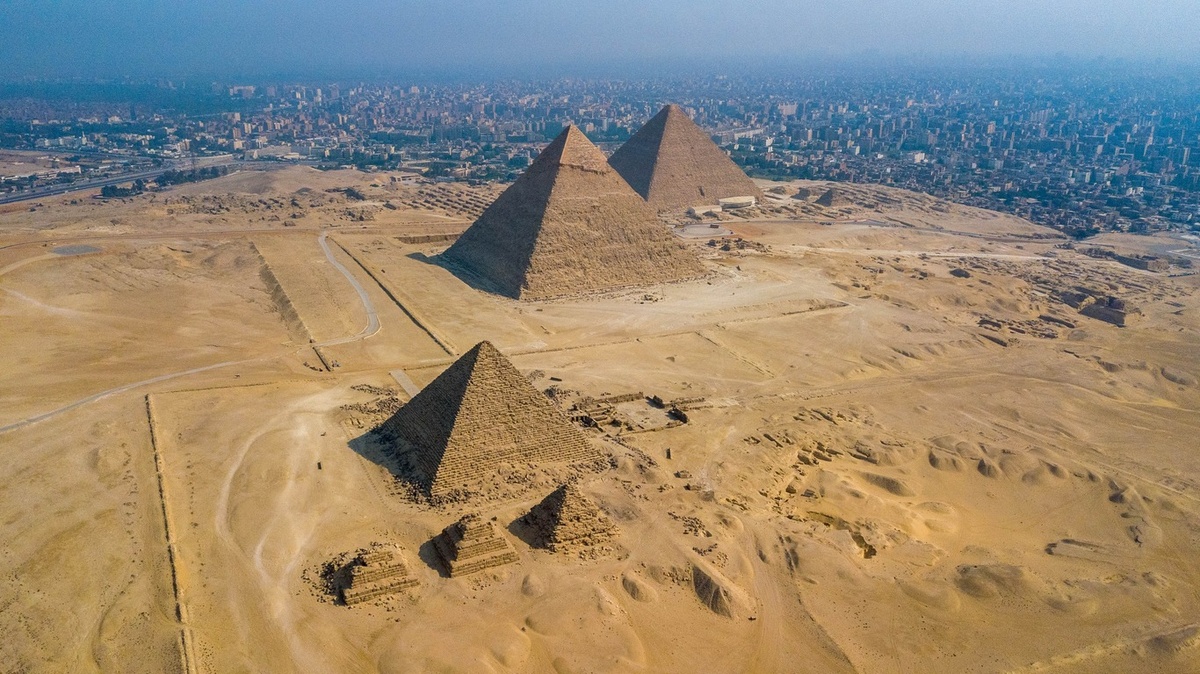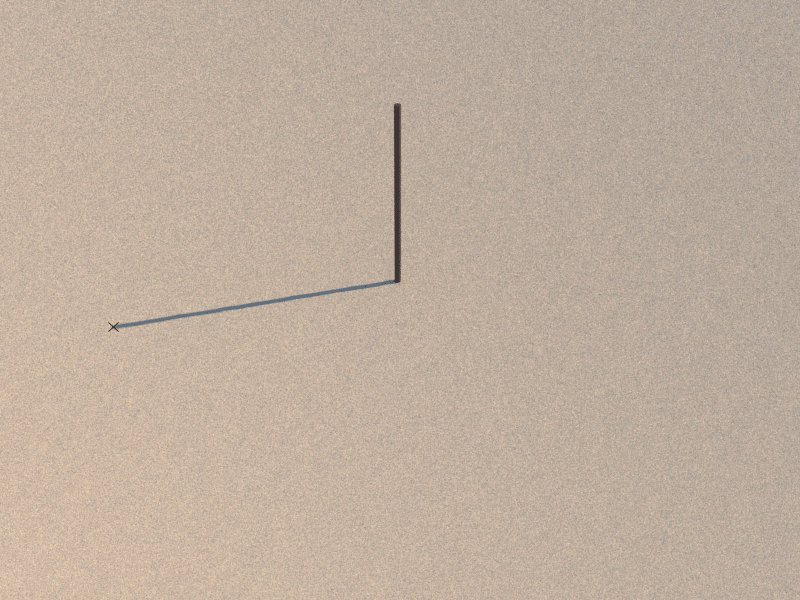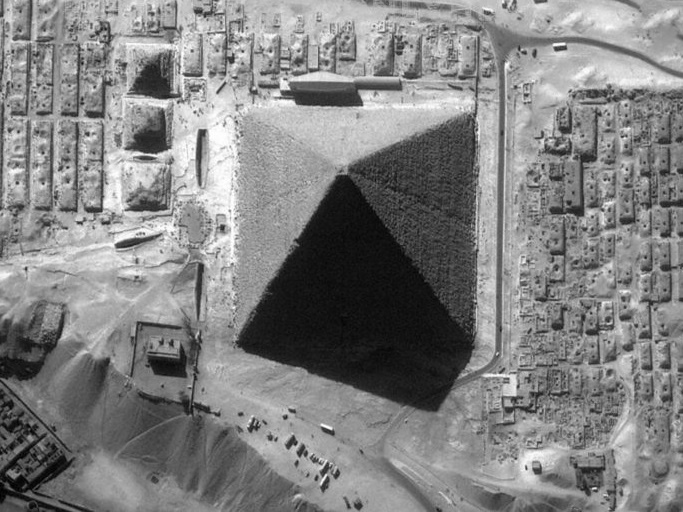The secret to the perfect alignment and balance of the Pyramids may have come from the Spring Equinox.
The Egyptian pyramids are incredibly symmetrical and aligned. Photo: Shutterstock
The Egyptian Pyramids are one of the 7 greatest wonders recognized by UNESCO and classified as a World Heritage Site in 1979. Until now, many mysteries surrounding the Pyramids have not been solved, including the incredibly balanced and straight design of this structure built 4,500 years ago.
In fact, the three largest pyramids, Khufu, Khafre, and Menkaure, are almost aligned on the ground. The pyramids' faces are also almost perfectly symmetrical. In addition, their edges and peaks almost coincide with the edges and peaks of a compass.
The three largest pyramids, Khufu, Khafre and Menkaure, are almost aligned on the ground. Photo: iStock.
The fact that such an impressive structure was created in a time when science and technology were not yet developed was considered a “miracle”. For centuries, this has been a mystery that has puzzled researchers.
In a study published in the Journal of Ancient Egyptian Architecture in 2017, American archaeologist and engineer Glen Dash offered an explanation for how the pyramids were built. According to Dash, the ancient Egyptians may have used the vernal equinox to create the alignment of the pyramids.
The location of the pyramid was most likely determined based on the sundial column on the spring equinox, Mr. Dash explained.
On the vernal equinox, day and night are almost equal in length. Photo: Live Science
Specifically, he tracked the shadow points of the clock column at regular intervals. The results showed that when the points were connected, a smooth curve was obtained. More surprisingly, the starting and ending points of the curve after being connected would create a straight line that matched the East-West direction on the compass.
The Sundial Column on the Spring Equinox creates perfect straight and curved lines, which may have been the basis for the design of the Egyptian Pyramids. Photo: Live Science
Glen Dash points out that similar levels of error were found in the alignment of the pyramids of Khufu, Khafre and Menkaure at Giza. The test was conducted in Connecticut, but Dash says the same thing would happen in Egypt.
According to Dash, the ancient Egyptians aligned the Pyramids on a sunny day and they were able to calculate the Spring Equinox by counting back from the Winter Solstice.
In addition, the four sides of the Great Pyramid of Giza are slightly concave rather than completely flat, creating a unique octogonal effect. This effect can only be seen from the air, under suitable lighting conditions: at dawn and dusk on the Spring and Autumn equinoxes.
The unique 8-sided effect can only be seen on the Spring or Autumn equinox of the Great Pyramid of Egypt. Photo: Live Science
Although the American archaeologist's arguments are quite reasonable and logical, there is still no solid evidence that the ancient Egyptians did so.
“The Egyptians left very few clues. There are no engineering documents or architectural manuscripts that demonstrate how the ancient Egyptians aligned any of their temples or pyramids,” writes Glen Dash.
The vernal equinox falls around March 21 each year, when the plane of the Earth's equator passes through the center of the Sun. On this day, the length of day and night is almost equal.
The vernal equinox is also considered an auspicious day by many civilizations because it marks the end of winter, the beginning of the planting season, and the beginning of new growth.
According to Zing
Source







































































































Comment (0)